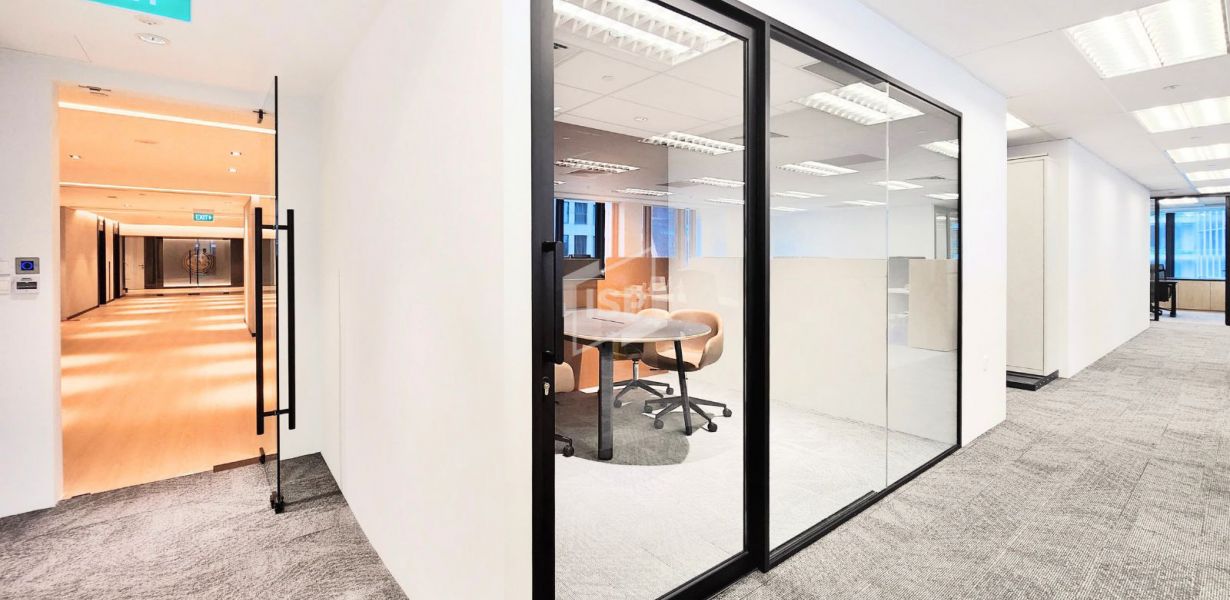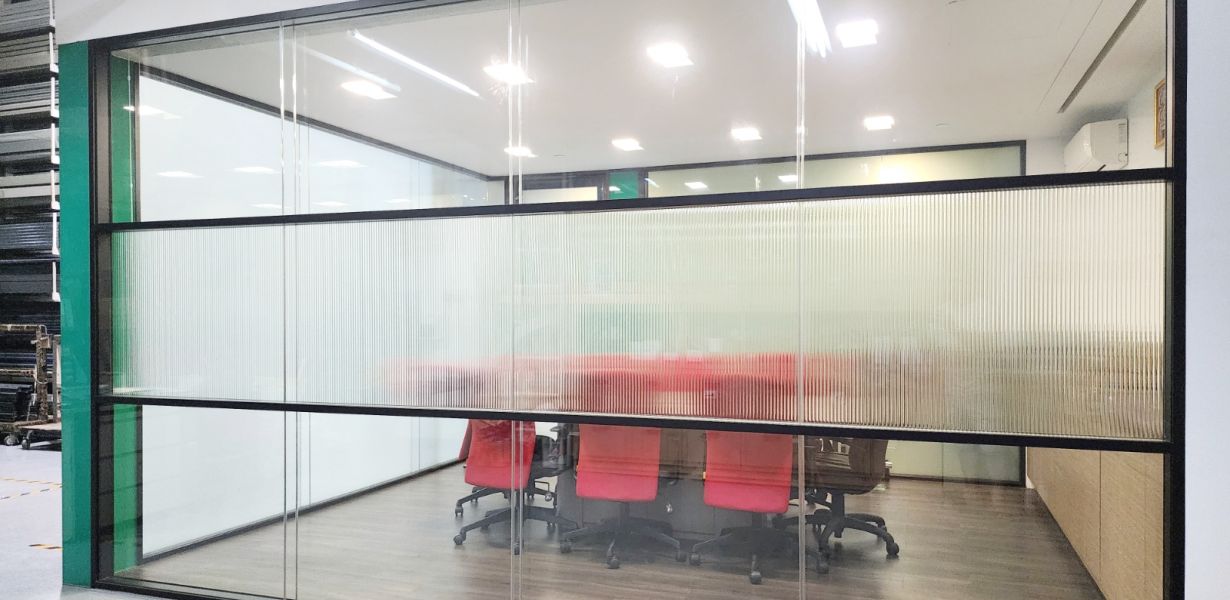Acoustic Glass Partitions – Understanding Sound

Sound is an essential element of human experience, shaping the way we communicate and interact with our surroundings. Whether in a busy office, a private meeting room, or a coworking space, controlling sound is crucial for productivity, comfort, and privacy. This article explores the basic principles of sound, introduces the decibel (dB) scale, and explains the relationship between decibels and Sound Transmission Class (STC), which is crucial in understanding how acoustic glass partitions can impact the sound quality of a space.
1. Introduction to Sound
Sound is produced when an object vibrates, causing the surrounding medium—whether air, water, or a solid—to oscillate. These vibrations propagate as waves through the medium, carrying energy and information from the source to the observer. Importantly, sound requires a medium to travel through, which is why there is no sound in the vacuum of space.
Sound waves are typically classified as longitudinal waves, in which the particles of the medium move in the same direction as the wave. Imagine squeezing a coiled spring, then releasing it—this compression and expansion as the wave travels is analogous to how sound moves through air. In air, the sound waves push and pull layers of air molecules, transmitting vibrations from one to the next until they reach our ears.
2. Introduction to Decibels (dB)
The decibel (dB) is the unit of measurement for sound intensity. It is a logarithmic unit used to express the ratio between two values of a physical quantity, such as sound pressure, voltage, or power. Because sound spans a vast range from the quietest sounds that can be heard to those that can cause permanent hearing damage, the decibel scale provides a more manageable way to measure and express this range.
Unlike standard units such as meters or kilograms, the decibel scale is relative, meaning it compares one sound level to another. The human ear is sensitive to an enormous range of sound intensities. For example, the difference between a whisper and a rock concert is about 80 dB. This range would be difficult to express with linear units, but the logarithmic nature of decibels makes it easier to quantify.
The ear’s response to sound is nonlinear, meaning we hear changes in loudness differently at different sound levels. For instance, a 10 dB increase in sound intensity is perceived as roughly twice as loud, while a decrease of 10 dB is perceived as half as loud. The decibel scale thus allows for a more intuitive understanding of how we experience sound, despite the wide variation in sound pressures.
3. The Relationship Between dB and STC
When evaluating acoustic materials or partitions, such as glass walls, the effectiveness of a partition in reducing sound transmission is often quantified using the Sound Transmission Class (STC). STC is a rating that indicates how much sound a partition can reduce. While both STC and dB are concerned with the attenuation of sound, it’s important to understand their relationship to avoid confusion.
The STC rating is, in essence, a reflection of the sound reduction in decibels. An STC rating tells you the amount of sound (in dB) that is blocked by a partition or material. For example, a partition with an STC of 50 will reduce sound by approximately 50 dB. However, it’s important to note that the STC rating doesn’t directly equate to a simple reduction in volume; instead, it reflects the overall effectiveness of a material in reducing sound transmission across a broad range of frequencies.
A change of 1 or 2 STC points, or the equivalent 1 or 2 dB, is generally not perceptible to the human ear. Therefore, an STC rating of 50 is often considered to be the same as an STC rating of 49 or 51. According to acousticians and manufacturers, the human ear is not sensitive enough to detect such small variations in sound transmission, meaning partitions with closely related STC ratings will perform similarly for actual applications.
The key takeaway is that STC ratings are useful for evaluating the performance of acoustic partitions in blocking sound transmission, but the difference in performance between partitions with STC ratings of 49 and 51, for example, would be imperceptible to the average person.
Understanding sound, decibels, and the relationship between STC and dB is vital for anyone considering the use of acoustic glass partitions in commercial and residential spaces. Sound management plays a crucial role in enhancing privacy, reducing distractions, and improving overall acoustic comfort in a variety of environments.
By grasping these basic acoustic principles, you can make more informed decisions about selecting the right materials and partitions for your space, optimizing both function and comfort. Whether you’re designing a new workspace or upgrading an existing one, understanding sound and its measurement is key to achieving the ideal acoustic environment.



